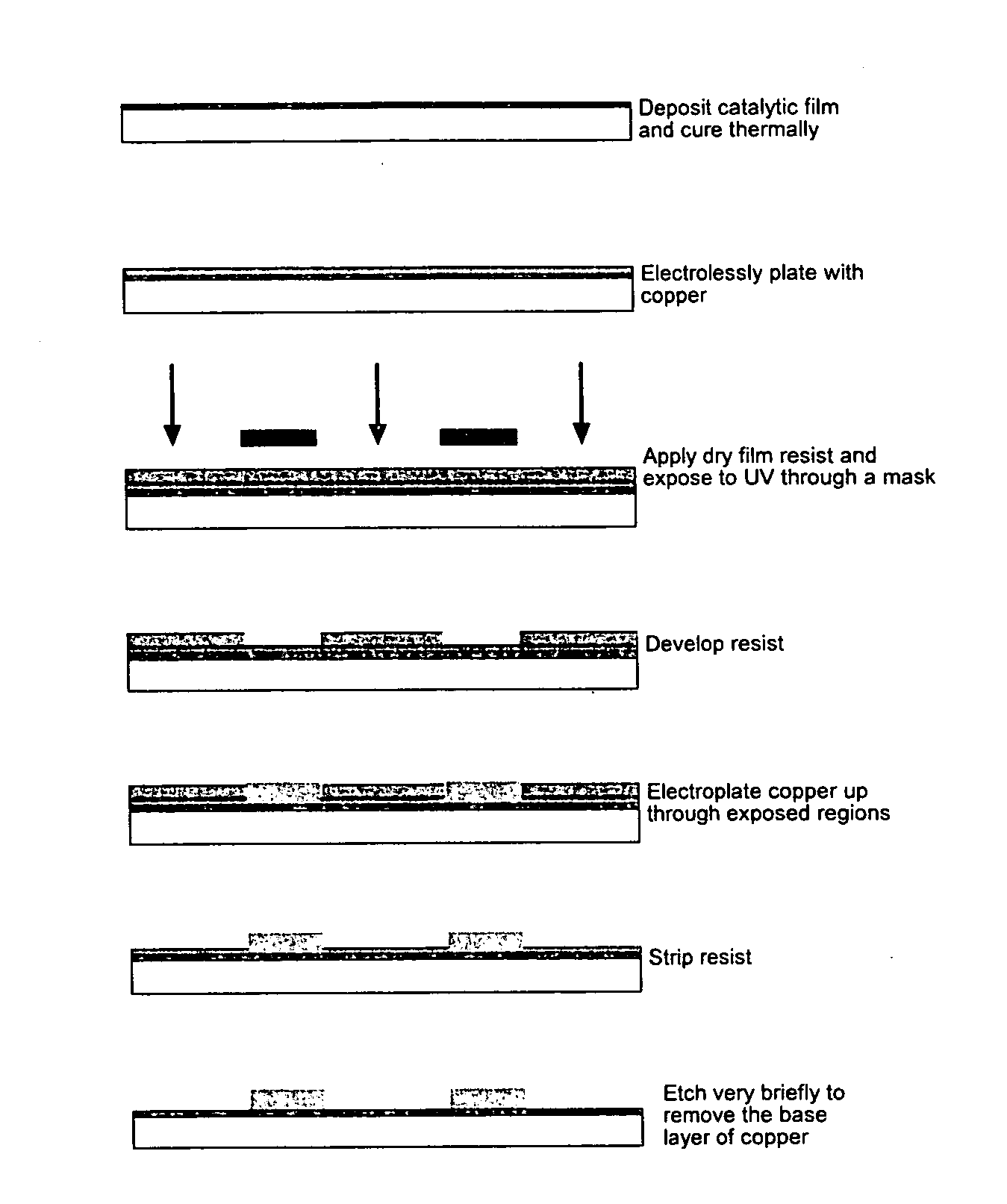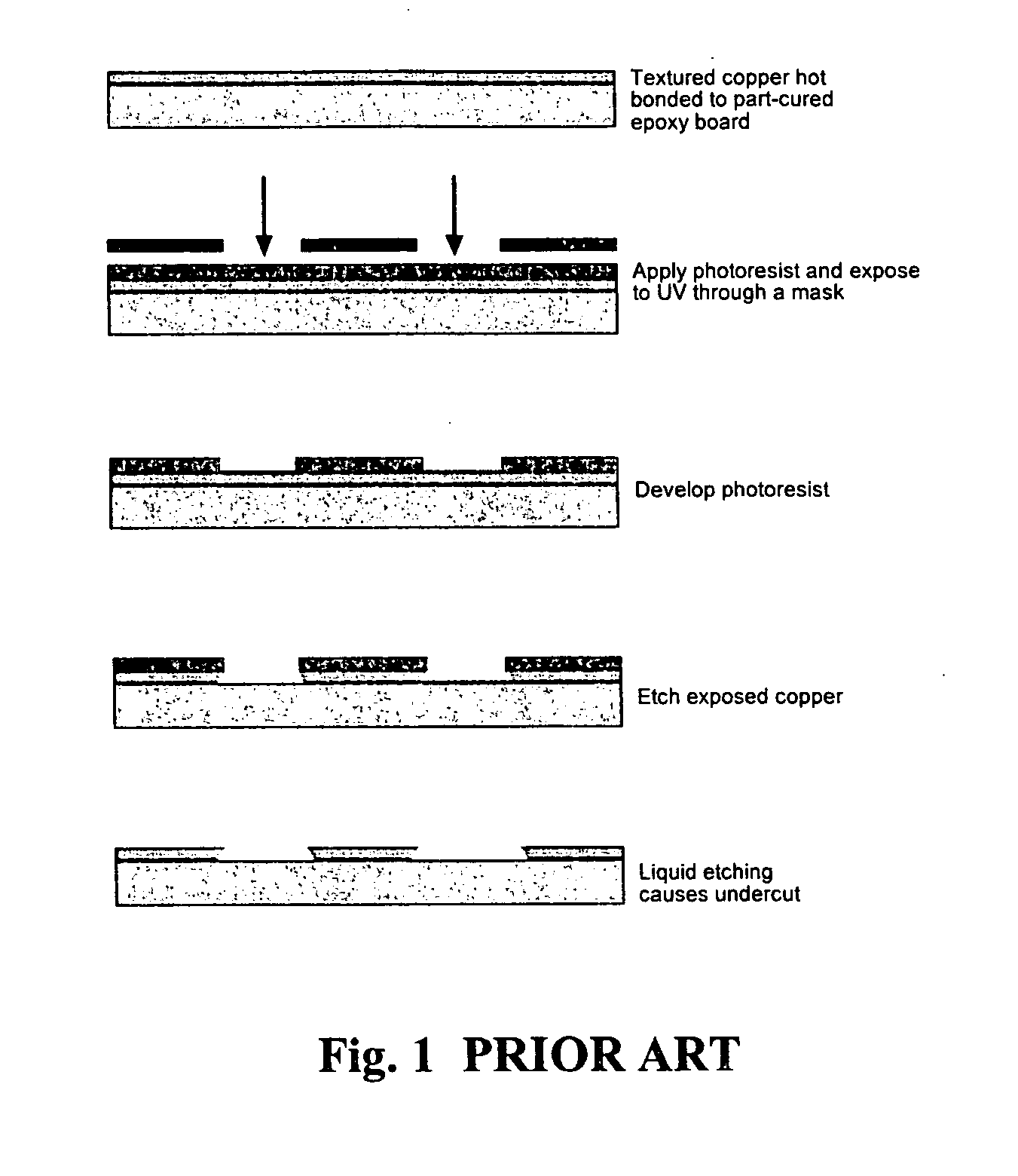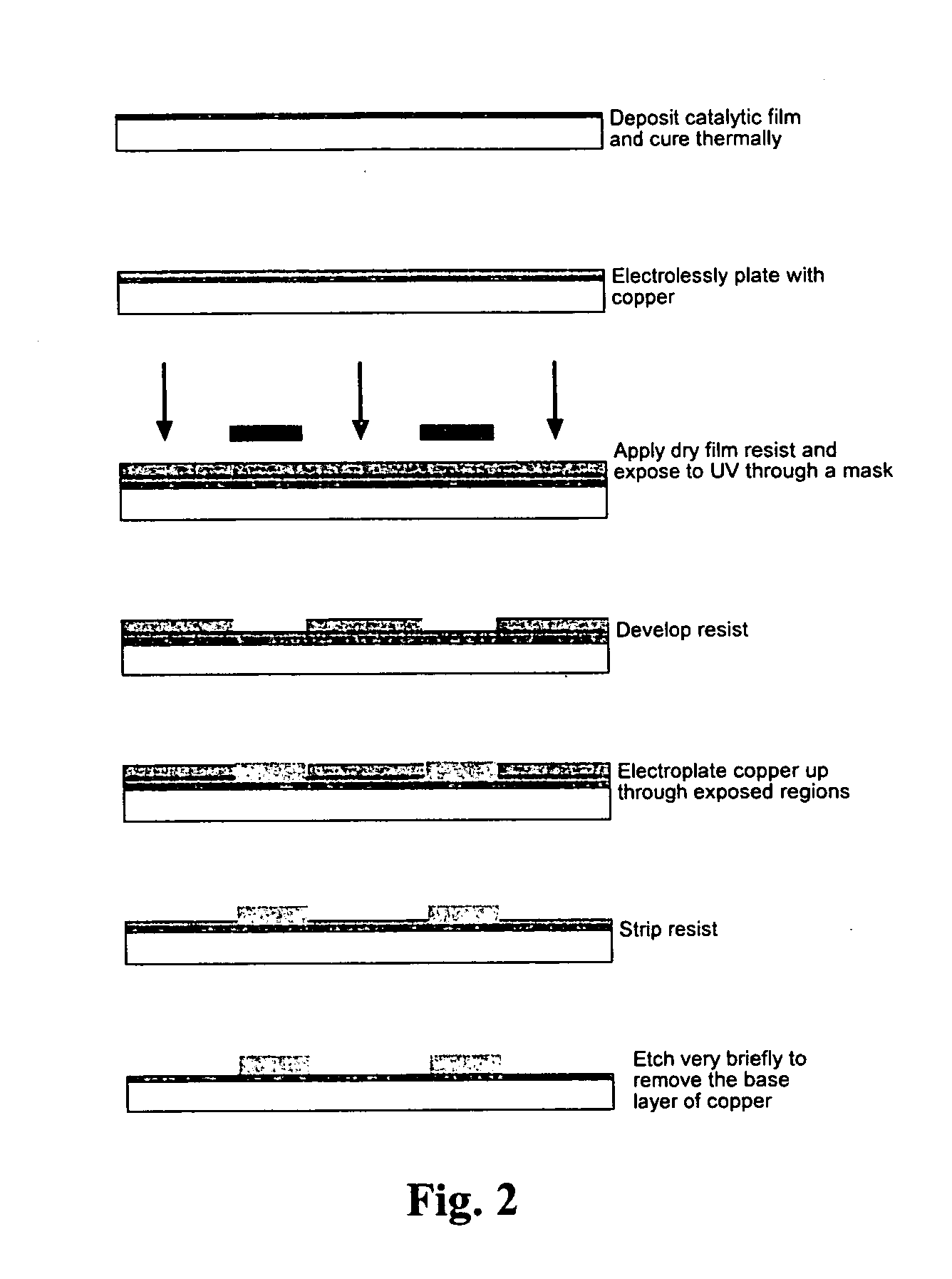Nano-particle dispersions
- Summary
- Abstract
- Description
- Claims
- Application Information
AI Technical Summary
Benefits of technology
Problems solved by technology
Method used
Image
Examples
example 1
Dispersions Containing Zirconium Polymer
[0052]Palladium nitrate was dissolved in an aqueous solution containing zirconium (nitrate) polymer (supplied by AMR Ltd.) and a water-soluble organic polymer, polyvinyl alcohol. The palladium salt began to decompose spontaneously, over a period of a few hours, to produce a dark-coloured liquid. It was found that the change in colour was due to the reduction of the palladium salt. It was observed in these experiments that it was necessary to have a carefully optimized ratio of palladium salt; zirconium polymer; and water-soluble polymer in order to produce a stable, catalytically active dispersion. Deviations from this ratio can result in an unstable liquid, from which the palladium slowly settles out; or in a poorly performing catalyst. However, such dispersions can be stable and usable over a short period of several days or more. Table 1 shows how variations in the composition of the liquid can cause significant changes in the stability of t...
example 2
Preparation of a Nanoparticulate Palladium Containing Dispersion
[0054]We now describe the preparation of the most stable dispersion shown in Table 1 (second row). A solution of polyvinyl alcohol of molecular weight 85,000 to 146,000 (Sigma-Aldrich Co.) was prepared using deionised water. To this was added a solution of zirconium (nitrate) polymer, followed by ultrasonic agitation for approximately 15 min. An aqueous palladium nitrate solution was then added, followed once more by ultrasonic agitation for 15 min and then allowed to stand at room temperature. The concentration of the components was: polyvinyl alcohol: 5 g / l; zirconium (nitrate) polymer (expressed as ZrO2 content): 6.5 g / l; and palladium nitrate: 1.25 g / l. After approximately one hour the solution was observed to darken, and after 48 hours it had become completely black. Alternatively, this result can be achieved in a few minutes by passing hydrogen-containing gas (5% hydrogen in nitrogen) through the liquid. Transmiss...
example 3
The Beneficial Effects of Sucrose on Nano-Particulate Metallic Dispersions
[0055]The palladium nano-particulate-containing dispersion described above in Example 2 was more stable than the other variants described in Table 1. However it was observed that over a period of several weeks at room temperature it showed a tendency to settle out, although it was found that this behaviour could be substantially slowed down by storing the liquid in a refrigerator (at typically 4° C.). We then discovered that if sucrose was incorporated into the liquid along with the water-soluble organic polymer, and before the addition of the palladium nitrate, the resultant nano-dispersion of palladium remained stable at room temperature, and showed no tendency to settle out even after several months. In addition, it was found that the preparation of the dispersion could, if required, be achieved rapidly by using a water-soluble reducing agent, of which ascorbic acid was effective. This new approach is descr...
PUM
| Property | Measurement | Unit |
|---|---|---|
| Temperature | aaaaa | aaaaa |
| Temperature | aaaaa | aaaaa |
| Temperature | aaaaa | aaaaa |
Abstract
Description
Claims
Application Information
 Login to View More
Login to View More - R&D
- Intellectual Property
- Life Sciences
- Materials
- Tech Scout
- Unparalleled Data Quality
- Higher Quality Content
- 60% Fewer Hallucinations
Browse by: Latest US Patents, China's latest patents, Technical Efficacy Thesaurus, Application Domain, Technology Topic, Popular Technical Reports.
© 2025 PatSnap. All rights reserved.Legal|Privacy policy|Modern Slavery Act Transparency Statement|Sitemap|About US| Contact US: help@patsnap.com



